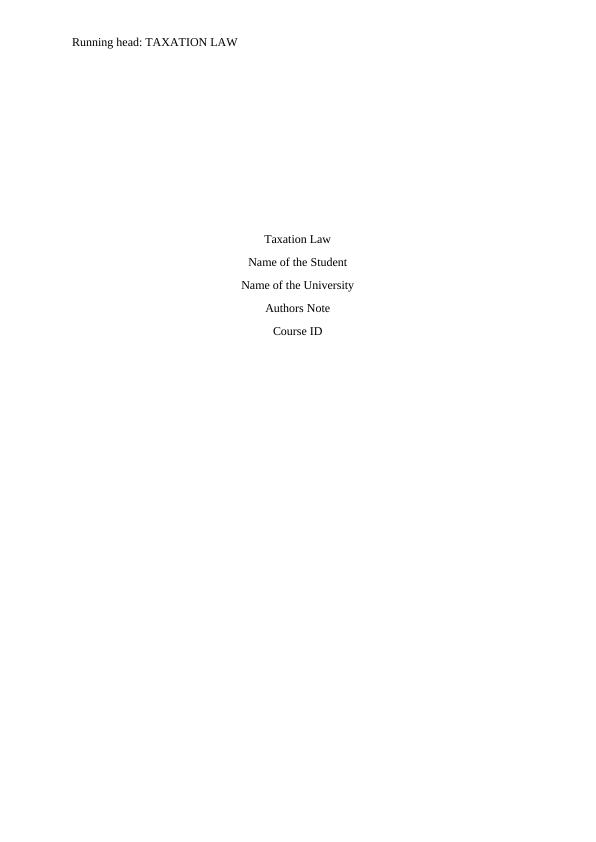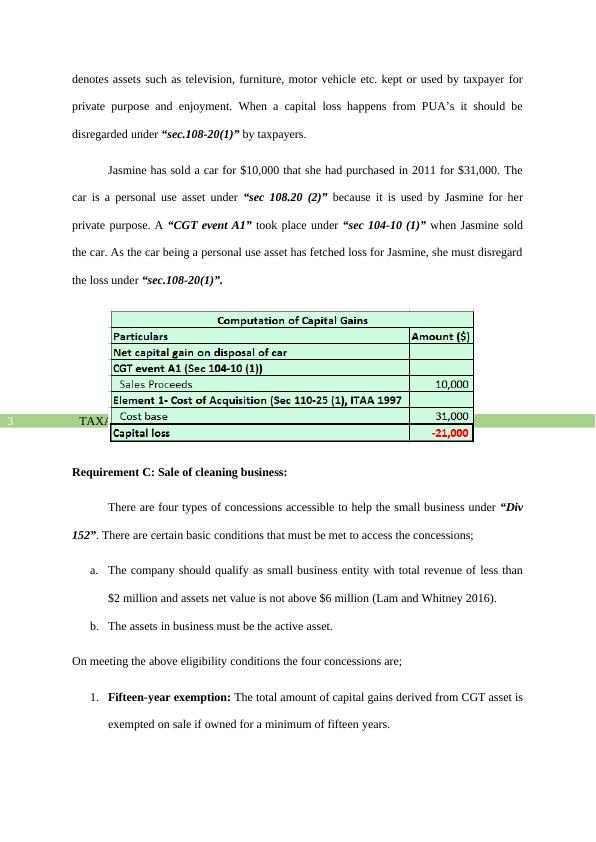Taxation Law: CGT on Sale of Assets and Depreciation Deduction
This individual assignment is a part of the assessment for the Taxation Law course at Hollmes Institute. It assesses students on their knowledge and understanding of tax law concepts, practical skills in analyzing tax law issues, and ability to apply legal tax principles.
12 Pages2903 Words485 Views
Added on 2022-10-14
About This Document
This document explains the application of CGT on the sale of assets such as main house, car, cleaning business, furniture, and paintings. It also discusses the deduction for depreciation under Division 40, ITAA 1997 of certain assets that are used for generating taxable income.
Taxation Law: CGT on Sale of Assets and Depreciation Deduction
This individual assignment is a part of the assessment for the Taxation Law course at Hollmes Institute. It assesses students on their knowledge and understanding of tax law concepts, practical skills in analyzing tax law issues, and ability to apply legal tax principles.
Added on 2022-10-14
ShareRelated Documents
End of preview
Want to access all the pages? Upload your documents or become a member.
Question Answer on Taxation Law 2022
|12
|2877
|15
Taxation Law Australia Question Answer 2022
|12
|2817
|16
Taxation Law: Sale of Assets and Depreciation of Assets
|12
|2918
|291
Sale of family home: Capital gains
|12
|2932
|264
Taxation Law: Capital Gains, Personal Use Assets, Small Business Concessions, Depreciation
|12
|2821
|413
Taxation Law: CGT Liability and Capital Allowance for Depreciating Assets
|13
|2899
|164




